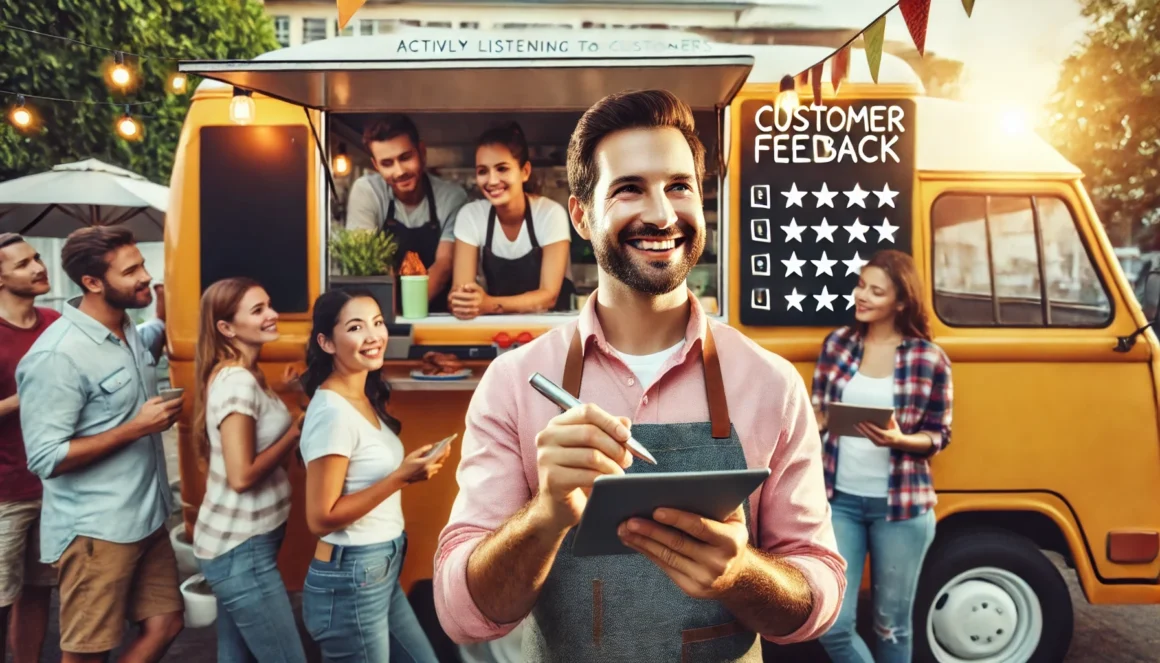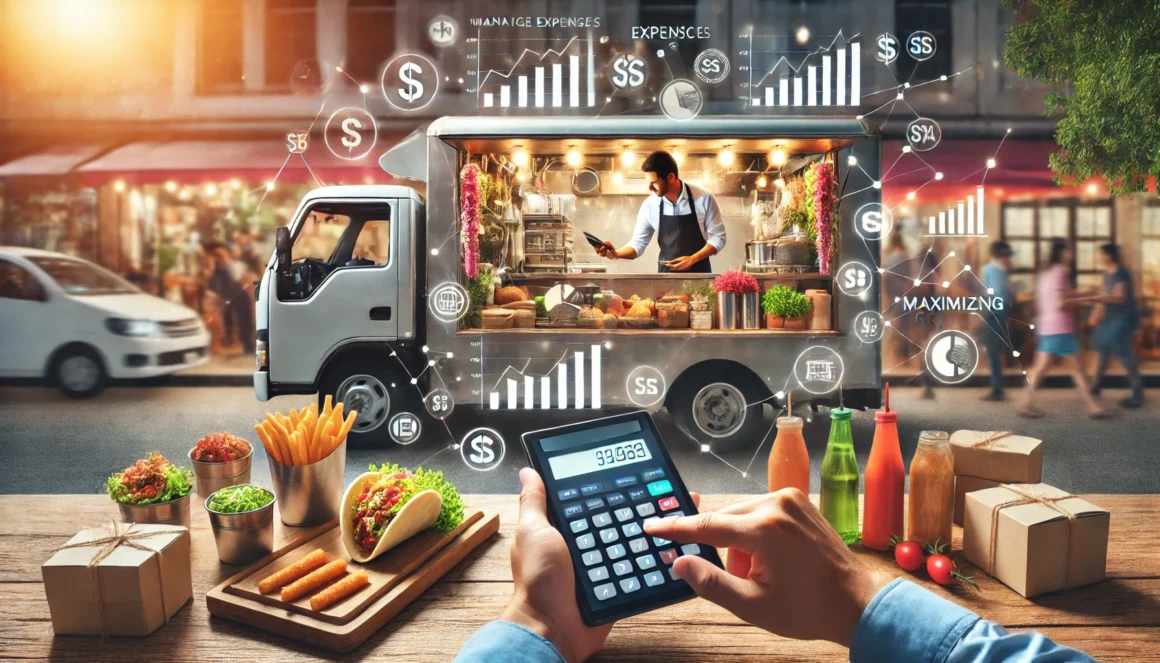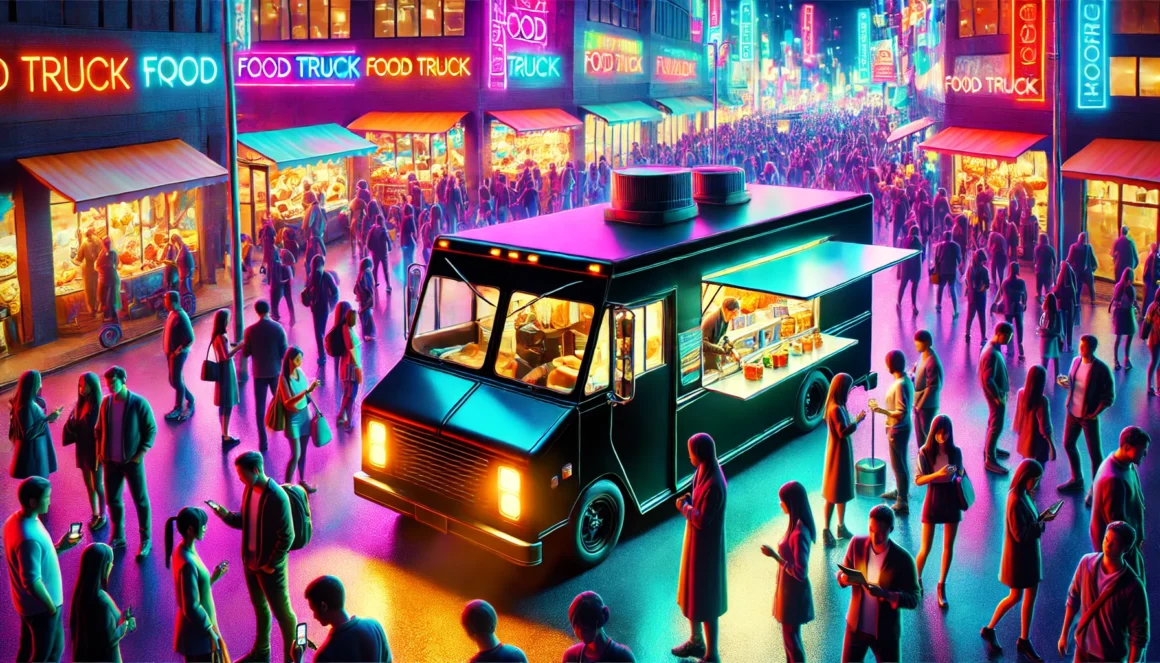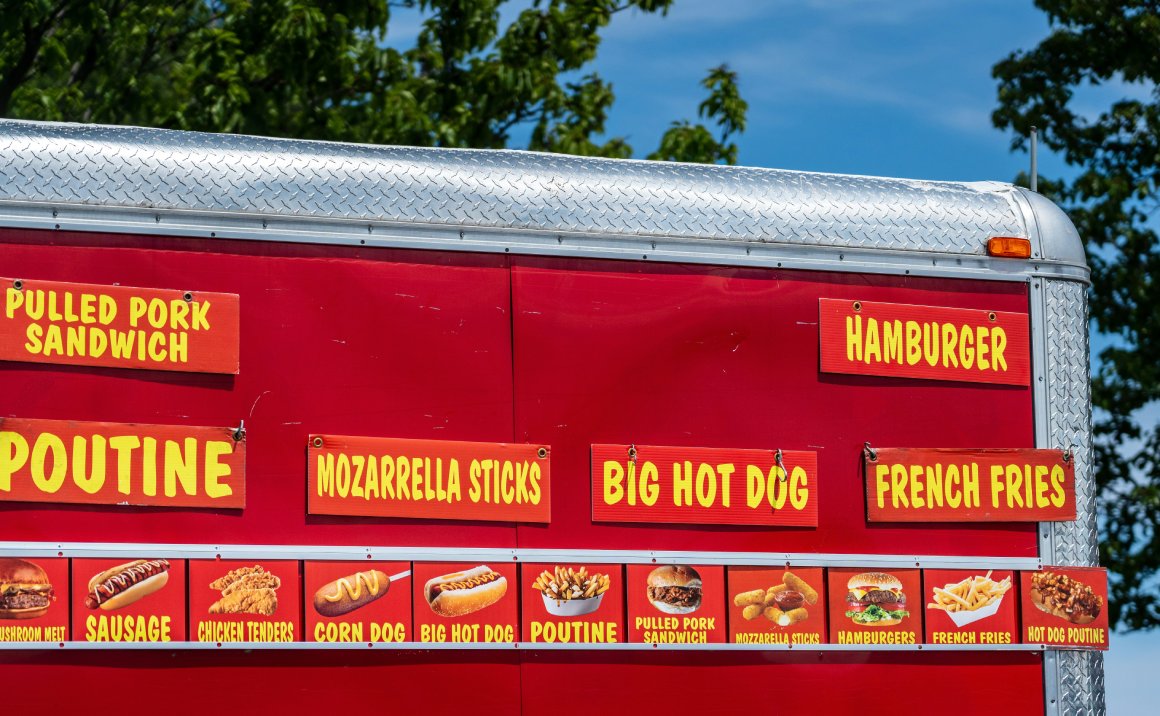
How to Grow Your Food Truck Following: Proven Customer Acquisition Strategies
This post is part of a regular series. Click here to start at the beginning.
Attracting new customers is a critical part of expanding your food truck business. While building loyalty with existing customers is important, growing your customer base is essential for long-term success. Whether you’re just starting out or looking to boost your visibility, implementing advanced customer acquisition strategies can help you reach new audiences and keep your truck busy during both peak and slow seasons.
In this post, we’ll explore actionable ways to attract new customers, how to measure the success of your efforts, and examples of how food trucks can leverage creative tactics to grow their following.
1. Utilize Location-Based Advertising to Drive Foot Traffic
One of the advantages of running a mobile business like a food truck is the ability to move to high-traffic locations and attract customers on the go. Location-based advertising can help you reach customers nearby who may not know your truck is in the area, driving foot traffic and increasing visibility.
How to Implement This Tip:
- Run Geo-Targeted Ads on Social Media: Platforms like Facebook and Instagram allow you to run geo-targeted ads that show up to users within a specific radius of your food truck’s location. These ads are perfect for reaching potential customers who are already nearby and may be looking for a quick bite to eat.
Example: A smoothie truck runs Instagram ads targeted at users within a two-mile radius of a popular park where the truck is parked for the day. The ad features a special offer for anyone who mentions the post, attracting nearby park-goers looking for a refreshing drink. - Leverage Google Ads for Local Search: Google Ads allows you to target local customers searching for nearby food options. By bidding on keywords like “food trucks near me” or “best tacos in [city],” your truck’s ad can appear at the top of search results, making it easy for new customers to find you.
Example: A taco truck in Austin, Texas, runs a Google Ad campaign targeting users searching for “food trucks in Austin” or “tacos near me.” The ad includes the truck’s location and a link to their Google My Business profile, making it easy for customers to navigate directly to the truck. - Promote Pop-Up Events With Location-Based Ads: If your truck participates in pop-up events, festivals, or local markets, run geo-targeted ads in the days leading up to the event to drive attendance. Highlight the event details and any special promotions to attract customers.
Example: A dessert truck runs Facebook ads promoting their appearance at a weekend food truck festival. The ad targets users within a 10-mile radius of the event and offers a “buy one, get one free” deal on their signature ice cream sandwiches.
Expected Results:
- Increased Foot Traffic: Location-based ads help you reach nearby customers, driving them to your truck when they’re already in the area.
- Higher Awareness: Geo-targeted ads increase your truck’s visibility in local searches, making it easier for new customers to discover your business.
- Measurable Impact: Track the number of customers who mention the ads when they visit your truck, and use social media analytics to monitor how many people clicked on your location-based ads.
2. Partner With Influencers or Local Food Bloggers
Influencer marketing isn’t just for big brands—food trucks can also benefit from partnering with local influencers or food bloggers who have a strong following. By collaborating with influencers, you can reach new customers who trust their recommendations and are eager to try new food experiences.
How to Implement This Tip:
- Invite Local Influencers to Your Truck: Reach out to local food influencers or bloggers and invite them to visit your truck for a free meal in exchange for a review or shout-out on their social media channels. Be sure to choose influencers whose audience aligns with your target market.
Example: A burger truck invites a popular local Instagram food influencer to try their new gourmet burger. The influencer shares a photo of the meal with their 10,000 followers, driving new customers to the truck over the next week. - Offer Exclusive Menu Items for Influencer Events: Create an exclusive or limited-time menu item that influencers can promote to their followers. This adds an element of excitement and exclusivity, encouraging more customers to visit your truck before the item is gone.
Example: A coffee truck creates a special “Influencer Latte” for a local blogger event. Influencers promote the drink on their platforms, and customers flock to the truck to try the limited-edition item before it’s no longer available. - Host Influencer Meet-and-Greets: Partner with influencers to host a meet-and-greet event at your truck, where fans can meet their favorite influencers and try your food at the same time. This is a great way to attract a new audience while creating buzz around your truck.
Example: A dessert truck partners with a local food blogger to host a meet-and-greet at their truck during a busy farmers’ market. The blogger promotes the event on social media, drawing a crowd of fans who also purchase desserts while attending the event.
Expected Results:
- New Customer Acquisition: Influencers help you reach new audiences who trust their recommendations, leading to an influx of new customers visiting your truck.
- Increased Social Media Engagement: When influencers post about your truck, it boosts your social media visibility and engagement as their followers check out your profile and follow your updates.
- Measurable Results: Track how many customers mention the influencer collaboration when visiting your truck, and monitor follower growth and engagement on your social media platforms following the partnership.
3. Participate in Local Festivals and Events
Local festivals, markets, and community events are prime opportunities to introduce your food truck to a new audience. These events often attract large crowds, giving you the chance to serve hundreds of new customers in a single day. Attending events also helps increase your truck’s visibility and build brand recognition within your community.
How to Implement This Tip:
- Sign Up for Popular Local Events: Research local food festivals, farmers’ markets, and community gatherings in your area and apply to participate. These events typically have high foot traffic and draw in a wide range of customers, making them a great way to showcase your truck.
Example: A pizza truck signs up for a popular local music festival that attracts thousands of attendees. The truck promotes their participation on social media in the days leading up to the event and offers a special festival-only menu item to generate excitement. - Offer Event-Exclusive Menu Items or Deals: To make your truck stand out at busy events, consider offering a special menu item or deal that’s only available during the event. This creates urgency and encourages attendees to try your truck before the event ends.
Example: A taco truck offers a “Festival Combo” at a local street fair, which includes three specialty tacos and a drink at a discounted price. The deal is available only during the festival, driving increased orders throughout the day. - Collaborate With Event Organizers for Promotions: Work with event organizers to promote your truck through their marketing channels. This might include being featured on the event’s website, social media pages, or printed materials, increasing your visibility to event attendees.
Example: A coffee truck partners with the organizers of a weekend farmers’ market to offer attendees a 10% discount on their first order. The market promotes the deal through their email newsletter and social media, attracting more visitors to the truck.
Expected Results:
- Increased Foot Traffic: Participating in local festivals and events exposes your truck to a large, diverse audience, leading to a significant boost in sales for the day.
- New Customer Acquisition: Many of the customers you serve at events will be first-time visitors who may become repeat customers if they enjoy their experience.
- Measurable Impact: Track your sales during the event and compare them to your typical daily sales to see how much business the event generated. You can also monitor social media mentions and new followers gained as a result of your event participation.
4. Create Referral Programs to Encourage Word-of-Mouth
Word-of-mouth marketing is one of the most effective ways to grow your food truck business, and referral programs can amplify these efforts. By encouraging your existing customers to refer friends and family, you can attract new customers through trusted recommendations while rewarding loyal customers for their support.
How to Implement This Tip:
- Offer Discounts for Referrals: Create a referral program where customers receive a discount or reward for referring new customers to your truck. You can offer discounts to both the referrer and the new customer to incentivize participation.
Example: A sandwich truck offers a “Refer a Friend” program where both the referrer and the new customer receive $5 off their next purchase. Customers can share a referral code or link via email or social media, making it easy to spread the word. - Use Digital Referral Tools: If you have a digital loyalty program or online ordering system, consider integrating a referral feature that tracks referrals automatically. This makes it easy for customers to participate and for you to monitor the program’s success.
Example: A coffee truck uses an app-based loyalty program that includes a built-in referral system. Customers can send referral links directly to friends, and both parties receive rewards when the new customer makes their first purchase.
- Promote the Program at Your Truck and Online: Make sure your customers know about the referral program by promoting it at your truck with signage and online through social media and email. The more visibility the program gets, the more likely customers are to participate.
Example: A dessert truck puts up a sign at the order window advertising its referral program: “Refer a friend, and both of you get $3 off your next order! Share your code today!” The truck also posts about the program on Instagram and Facebook, encouraging customers to refer friends and family. - Offer Exclusive Rewards for Top Referrers: To make the program even more exciting, offer special rewards to customers who refer the most new people to your truck. This can include exclusive menu items, free meals, or merchandise.
Example: A burger truck tracks referrals and rewards the top referrer of the month with a “VIP Meal,” which includes a free burger, fries, and drink. The truck also gives a shout-out to the top referrer on social media, creating a sense of community and encouraging more participation.
Expected Results:
- New Customer Acquisition: Referral programs help you attract new customers through trusted recommendations from friends and family, making it easier to convert first-time visitors into loyal customers.
- Increased Customer Engagement: A well-promoted referral program encourages your existing customers to stay engaged with your truck and share their positive experiences with others.
- Measurable Impact: Track the number of referrals and resulting sales through the program. Use digital tools or referral codes to monitor which customers are driving the most referrals and how the program impacts overall sales growth.
5. Offer First-Time Customer Discounts to Convert New Visitors
One way to attract new customers and convert them into regulars is by offering first-time customer discounts. A small incentive can go a long way in convincing new visitors to give your truck a try, and if they enjoy the experience, they’re likely to return.
How to Implement This Tip:
- Advertise a Discount for New Customers: Offer a discount for first-time visitors, such as 10-20% off their order or a free side with their meal. Promote this deal at your truck and through online channels to reach as many potential customers as possible.
Example: A smoothie truck offers first-time customers 15% off their first smoothie. The truck promotes the offer on its website, social media, and signage at the truck, encouraging people who haven’t visited before to give it a try. - Create an Online Sign-Up for First-Time Discounts: To capture customer information, require new visitors to sign up for the discount through your website or email list. This allows you to send follow-up promotions and marketing messages to keep them coming back.
Example: A taco truck asks new customers to sign up for their email list to receive a digital coupon for a free drink with their first order. The truck uses the email list to send out future promotions and updates about its location. - Highlight the Offer on Social Media: Use your social media platforms to promote the first-time customer discount and encourage people to visit your truck. This works especially well for attracting people who have been curious about your truck but haven’t tried it yet.
Example: A BBQ truck posts an Instagram story highlighting their first-time customer deal: “Never tried us before? Get 10% off your first order! Show this post at the window to claim your discount today.”
Expected Results:
- Increased Foot Traffic From New Customers: Offering a first-time discount provides an extra incentive for people who haven’t visited your truck yet to give it a try, boosting foot traffic.
- Higher Conversion Rates: A positive first experience combined with a discount can lead to higher conversion rates, as new customers are more likely to return if they feel they got a great deal.
- Measurable Impact: Track how many first-time customers use the discount and monitor their behavior over time to see if they return for future visits. You can also analyze how the promotion affects overall sales during the discount period.
6. Build an Engaging Website to Capture Online Traffic
In today’s digital age, having a strong online presence is crucial for customer acquisition. A well-designed website helps potential customers learn more about your food truck, view your menu, and find your location. It also provides a platform for capturing leads and driving engagement through email sign-ups, online ordering, or loyalty programs.
How to Implement This Tip:
- Create a User-Friendly, Mobile-Optimized Website: Most people will access your website from their smartphones, so make sure your site is mobile-friendly and easy to navigate. Include essential information such as your menu, hours of operation, location, and contact details.
Example: A coffee truck creates a mobile-friendly website that features their full menu, daily locations, and a contact form for event bookings. The site is optimized for speed and ease of use, ensuring a smooth experience for visitors on the go. - Include an Online Ordering System: If possible, integrate online ordering into your website. This allows customers to place orders in advance, reducing wait times and making it more convenient for people to visit your truck.
Example: A sandwich truck adds an online ordering system to its website, allowing customers to place lunch orders ahead of time. The truck promotes the convenience of ordering online, which leads to an increase in sales during busy lunch hours. - Capture Leads With Email Sign-Ups: Use your website to capture email addresses by offering an incentive, such as a discount or exclusive offers for subscribers. This helps you build an email list that you can use for future marketing efforts.
Example: A taco truck adds a pop-up to their website offering 10% off a customer’s first order in exchange for signing up for the email list. The truck uses the email list to send out location updates, promotions, and new menu announcements.
Expected Results:
- Increased Online Visibility: A well-optimized website helps you capture more online traffic and makes it easier for potential customers to find your truck.
- Higher Conversion Rates: Offering online ordering and easy access to essential information increases the likelihood that website visitors will convert into paying customers.
- Measurable Results: Track website traffic, online orders, and email sign-ups to measure how effectively your site is driving customer acquisition. Use Google Analytics or similar tools to monitor performance and identify opportunities for improvement.
Conclusion: Growing Your Food Truck Following With Proven Strategies
Attracting new customers to your food truck requires a combination of creativity, strategic marketing, and data-driven decision-making. By utilizing location-based advertising, partnering with influencers, participating in local events, and offering first-time customer incentives, you can expand your customer base and increase foot traffic. Additionally, building a strong online presence and leveraging referral programs will help you capture leads and convert new customers into repeat visitors.
The key to success is tracking your efforts and adjusting your strategies based on what’s working. With the right approach, you’ll not only attract new customers but also create a loyal community around your food truck.
Stay tuned for our next post, where we’ll explore how to optimize your food truck operations to handle increased demand and maintain efficiency as your business grows!
This post is part of a regular series. Please use these links to view the rest of the series in order.
Using Customer Feedback to Improve Your Food Truck
How to Leverage Customer Feedback to Boost Your Food Truck’s Success Customer feedback is one…
Budgeting for Your Food Truck – How to Manage Expenses and Maximize Profit
Mastering Your Food Truck’s Budget: A Guide to Managing Expenses and Maximizing Profit Budgeting is…
How to Handle Peak Times with Minimal Staff on Your Food Truck
Managing Peak Times with Minimal Staff: Strategies for Food Truck Owners One of the biggest…




